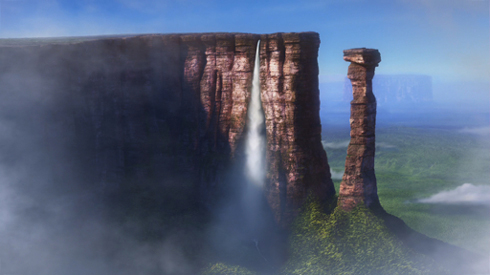Historical Anthropogenic Fire and Modern Park Management
Two recent additions to the W.I.S.E. Library deal with the confluence of historical (traditional) anthropogenic fire with modern problems (challenges) in managing large national parks.
In White, C.A., D.D.B. Perrakis, V.G. Kafka, and T. Ennis. 2011. Burning at the edge: integrating biophysical and eco-cultural fire processes in Canada’s parks and protected areas. Fire Ecology 7(1): 74-106 [here] the principal author, Clifford A. White, is Chief Scientist (emeritus) at Banff National Park in Alberta.
Banff National Park is Canada’s oldest national park (established in 1885) and most famous; Banff is Canada’s Yellowstone.
In “Burning at the Edge” the authors examine changes in historical fire frequency and extent. They show clearly that “climate” cannot be an explanatory factor for those changes. Instead, human ignitions or lack thereof have governed the fire regimes of Banff for thousands of years.
For more than ten millennia, First Nations of indigenous peoples have occupied almost all areas of Canada, with population density highest in more southern areas (McMillan 1995). Studies clearly show that humans set low intensity fires that burned over the long term within the larger matrix of fires (Lewis and Ferguson 1988, Turner 1999). Historically, at least in some areas, human use, not suppression, of fire was more significant. Fire was an easily available tool that could be routinely used for purposes ranging from altering wildlife habitat, to improving berry crops, to warfare (Boyd 1999, Stewart 2002). People living on the land understood fire’s role intimately, and because it was their most powerful tool to change landscapes, integrated this understanding into daily decisions for survival. …
Without traditional anthropogenic fire for 100+ years, biomass has accumulated and as a consequence, modern fires are large, destructive, and expensive. The solution to the crisis-level fire problem, argue the authors, is to restore cultural fire to the landscape.
Fire practitioners in Canadian parks and protected areas are stewards of combined eco-culturally and biophysically driven fire regimes. Similar to earlier generations of First Nations, today’s land managers face the same issue in maintaining eco-culturally important patches of relatively frequent, low-intensity fire dependent ecosystems within a landscape matrix of less frequent, large area, high-intensity fire. From the above case histories, it appears that managers are recognizing significant spatial and temporal interactions on the edge between these two general fire regimes. Moreover, managers are rediscovering First Nations’ traditional ecosystem knowledge of the human actions that were most practical for fire use in these northern regions where high-intensity fires are a dominant ecological force (Lewis and Ferguson 1988).
Management fires lit under an eco-cultural paradigm maintain an important component of the long-term regime while providing greater capacity for larger, higher intensity fires to occur with few negative ecological and socio-economic implications.
Not catastrophic “natural” fire. That’s not the solution — it is in fact the problem. Banff NP is a natural wonderland, a gift from Mother Nature, and we all love nature to beat the band. But, and it’s a big but, Banff is better off, nature at Banff is better protected, if traditional land management (anthropogenic fire and anthropogenic predation) is practiced there.
Another recent addition to our Library is: Iokiñe Rodríguez (2007) Pemon Perspectives of Fire Management in Canaima National Park, Southeastern Venezuela. Hum Ecol (2007) 35:331–343
Canaima NP is a world-class park, home to the Gran Sabana (great savanna) and tepuis (table-top mountains). The cliffs that surround the tepuis are so steep and challenging, making the plateau tops so remote, that Arthur Conan Doyle sited his novel, “The Lost World”, there.

Canaima NP is the Yellowstone of Venezuela. Canaima NP is not a lost world, however. People have been resident there for ~15,000 years. The Gran Sabana is anthropogenic — human burning practices created and maintain the anthropogenic mosaic of grasslands and tree islands.
Park managers today wish to eliminate the cultural ties and traditional management of the Pemon people. Dr. Rodríguez reports:
For more than 30 years, different institutions have striven to change or eliminate the traditional use of fire throughout the area popularly known as the Gran Sabana, in the eastern sector of the park. Fire control policies have been based on the assumption that the use of fire, particularly savanna burning, is causing a gradual reduction in forest cover (Galán, 1984; Gómez and Picón, 1994). Despite concerns over the use of fire in the park, land managers have shown little interest in understanding local fire regimes and Pemon views of fire. Instead, fire control has been based largely on preconceived ideas and unsubstantiated hypotheses of the impacts of fire, resulting in a long conflict between the State and the Pemon over the use of fire in the park.
Not only is shortsighted “natural” management destroying the Gran Sabana vegetation, the blindness of park managers is also destroying an entire culture — the culture that created the park vegetation arrangements in the first place.
An excellent slide show presentation put together by Iokiñe Rodríguez and entitled “Reframing the fire narrative in Canaima National Park, Venezuela” is [here].
The problems in both parks (and in Yellowstone, too) are more than environmental. Fire has not been eliminated; anthropogenic fire has. Cultural heritage has been denied and social injustice inflicted — to the detriment of the environment, because the culture and the environment were closely interwoven and mutually interdependent.
That’s the take home lesson.
